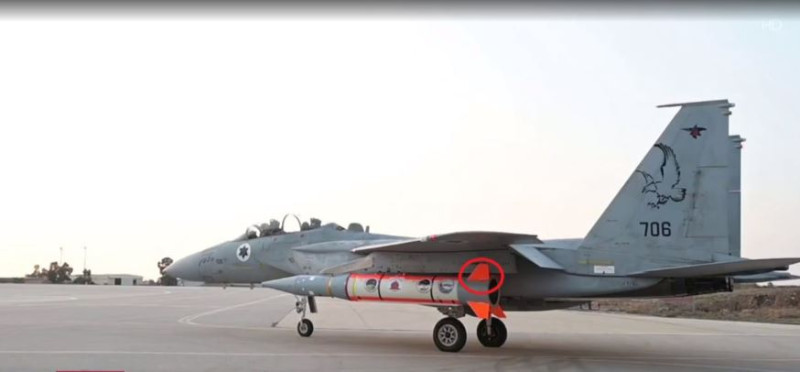The Israelis crossed two countries and launched the missile over Iraq or Syria while managing to bypass Iran’s defense system
Military operations in the Middle East are game-changing about the way war is now being fought as Israel’s attack on Isfahan introduced for the first time the launch of a ballistic missile from an aircraft in flight.
The Israelis took off from within Israel they crossed two countries, they passed over Jordan and launched this new weapon in Iraq or Syria, according to a report by Yiannis Paliouras. It is noted that the Israelis have not paid attention to ballistic missiles for a long time and preferred to make it an air weapon for the first time as no such enterprise has ever been recorded before.
The revelation was made in photos that saw the light of day, as in debris on Iranian soil, a missile mechanism is captured that is two characteristic links. At the same time, the rocket’s wing can be seen in the photos.
At a later stage, a comparison with photos of the missile allegedly used in the attack on Iran shows the two characteristic rings in the same spot as well, while another photo in which the rear wings were measured appears to be exactly the same. It is about the propellant, the booster of the Rock rocket or otherwise by its nickname, Blue Sparrow.
At the same time, the New York Times reports that Israel’s strike against Iran was carried out with an Israeli weapon that destroyed the Iranian defense system responsible for detecting and destroying aerial threats near Natanz, a city in central Iran. critical to the country’s secret nuclear weapons program, according to two Western officials and two Iranian officials.
The strike, Western officials said, was aimed at sending a message to Iran that Israel could bypass its defense systems and paralyze them, using just a fraction of the power Iran unleashed last week when it launched hundreds of drones and rockets into Israel.
The two Iranian officials said the weapon hit an S-300 anti-aircraft system at a military base in nearby Isfahan province. The officials’ reports are supported by satellite images analyzed by The New York Times, which showed damage to the radar of an S-300 system at the Eighth Shekari Air Base in Isfahan.
According to Western officials, one missile was fired from a warplane far from Israeli or Iranian airspace and included technology that allowed it to go undetected by Iran’s radars. Neither the missile nor the aircraft that launched it entered Jordanian airspace, Western officials said, in order not to draw Amman into the conflict, which had helped repel an Iranian offensive last week.
The two Iranian officials said the Iranian military detected no incursion into Iran’s airspace on Friday, including drones, missiles and aircraft. Iran’s state news agency IRNA said there were no missile attacks and that Iran’s air defense system had not been activated.
Source :Skai
With a wealth of experience honed over 4+ years in journalism, I bring a seasoned voice to the world of news. Currently, I work as a freelance writer and editor, always seeking new opportunities to tell compelling stories in the field of world news.











